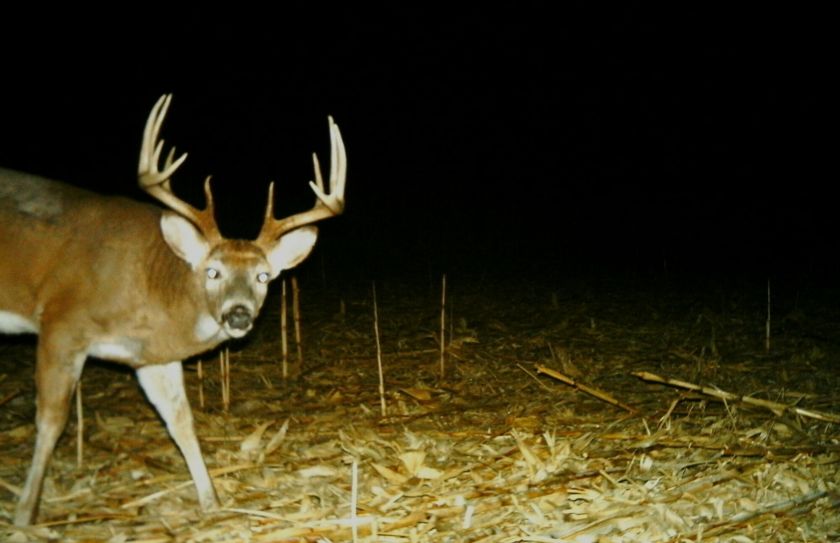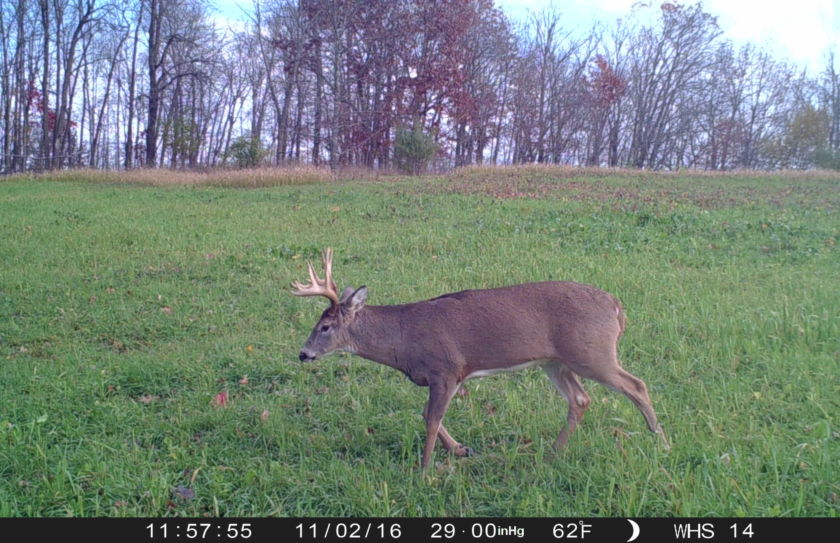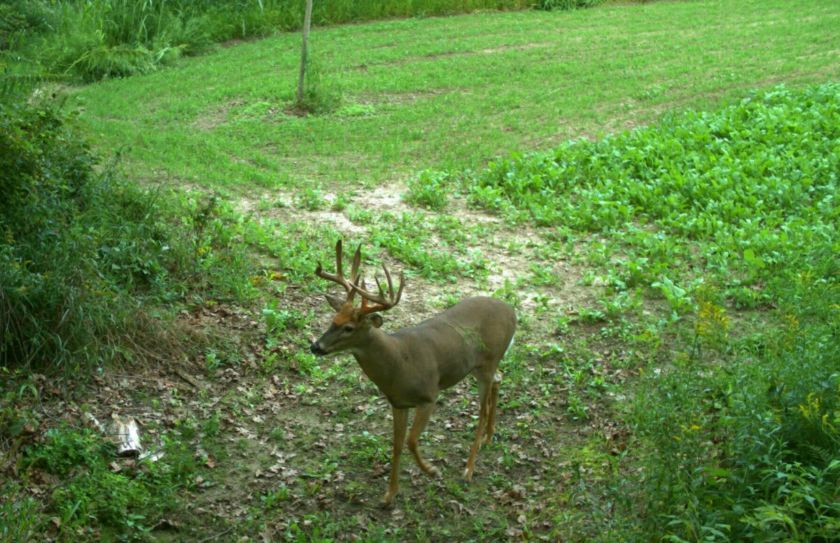One of the most powerful aspects of using food plots for deer hunting and habitat management, is that food plots dictate where deer choose to bed. If your goal is to experience the highest level of herd and hunting success, then using food plots to create deer bedding opportunity isn't just a cool concept, it's a priority.
Food Plots Dictate Where Bucks and Does Bed
A common misconception is that a perfectly planted and growing food plot, is a perfect food plot. This belief could not be further from the truth. Why? Because for better or worse, food plots work to align deer bedding areas. How food plots impact deer bedding on your land, should always be considered before ever even lifting a bag of seed. Here are 5 strategies that you should be using your food plots for, to determine where the deer actually bed on your land.
1. Does Love to Bed Near Their Afternoon Food Source
Doe family groups are very efficient groups of deer in the world of whitetails. I often refer to does as "straight line" movers. What that means is that primarily does primarily seem to prefer to travel from their daytime bedding areas to their preferred afternoon food source, in a fairly predictable, straight line. But that's not all.
The beauty of using food plots to define doe bedding areas, is that in my experience across nearly 2 dozen states, does will take over the closest available bedding cover to that food plot. By creating bedding areas on the appropriate side of food plots considering your access and areas best hidden for undisturbed daytime bedding opportunity, your deer management goals can begin to form the foundation for the entire pattern of deer movement on your land.
2. Bucks Prefer Secluded Bedding
It is very hard to imagine mature bucks bedding close to high traffic food sources or busy doe family group bedding areas for a reason: They really don't seem to prefer to! It all starts with food and doe bedding opportunity. Once you appropriately and successfully located food sources and doe bedding opportunity, you can then work on buck bedding opportunity. Unfortunately so much focus is often placed on where bucks could potentially bed, that doe bedding and food sources that dictate the beginning of defined bedding patterns, are often ignored. Once food and doe bedding has been aligned, you can then focus on buck bedding locations.
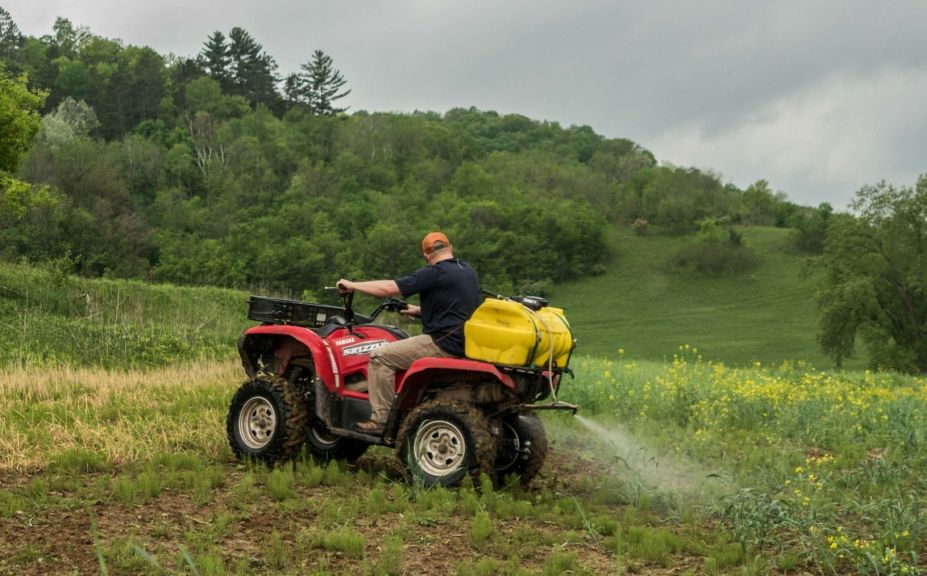
3. Buck Bedding Direction and Elevation Does Not Matter
Will a buck bed, high, low, East, West, North or South? The answer is all of the above, because the direction and elevation that a mature buck chooses to bed, is based on the location that food has been located, and then does are bedding. If a food source is high, then expect does to bed in the first available bench over the ridge, and bucks to bed even further below or all the way in the bottom. If the major food source is low, you can expect bucks to bed high and above doe bedding. The direction of bedding isn't determined by the wind or any elevation change, instead the direction of buck bedding is simply determined by the leftover amount of acres of adequate bedding space, outside of where does are bedding. I urge you not to fall into the trap of common thinking, that bucks bed high on a ridge or downwind of doe family groups. Folks, it really isn't that basic and if you design your herd and hunting success will be limited if you hold onto those concepts.
4. Food Plots Displace Buck Bedding
While food plots directly determine where doe family groups bed, they also determine where bucks will not bed. The larger the food source, the further a mature buck will bed away from that food source. While the distance a buck will bed away from a food source will vary based on the % of open land vs cover -greater distances for major cover areas- the concept is still the same.
5. All-Season Food and Bedding Opportunity is Critical
If your buck and doe bedding areas are hunter-pressured and your food sources are depleted or always changing in levels of attraction from one to another, then you will not be able to count on any form of defined bedding opportunity.
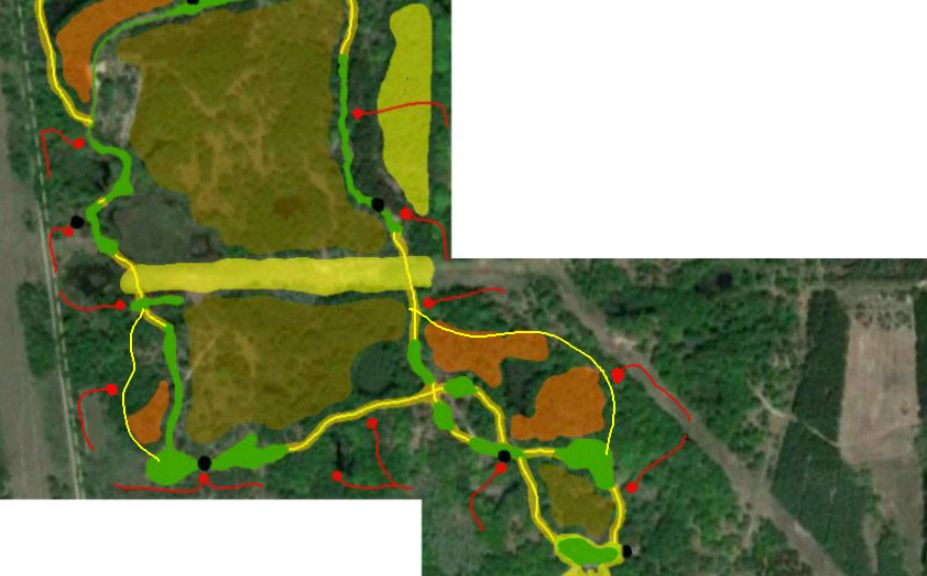
*One of the best ways to create the necessary amount of depth to have enough room for does and bucks to reside, is to create long, skinny food sources. This allows doe family groups to bed in a linear fashion, alongside lengthy food opportunities. In the case of the above picture, ample buck bedding opportunity has been created by transforming the inner food sources into cover, and then adding linear food sources near the exterior of the land. This allows does to bed closer to the outside of the land, mature bucks towards the inside and then for all the deer to move from the inside to the outside, every single afternoon.
Conclusion
The next time you are implementing a food plot location, make sure to consider the opportunities to define where deer bed on your land, and how it can enhance or hinder your herd and hunting opportunities. Food plots offer a huge opportunity to enhance your level of overall whitetail success. Undefined food source and bedding opportunity on your land, is one of the greatest threats to your level of overall herd and hunting success. It's time to sieze the potential power of food plots for a lot more than the food that they provide.
